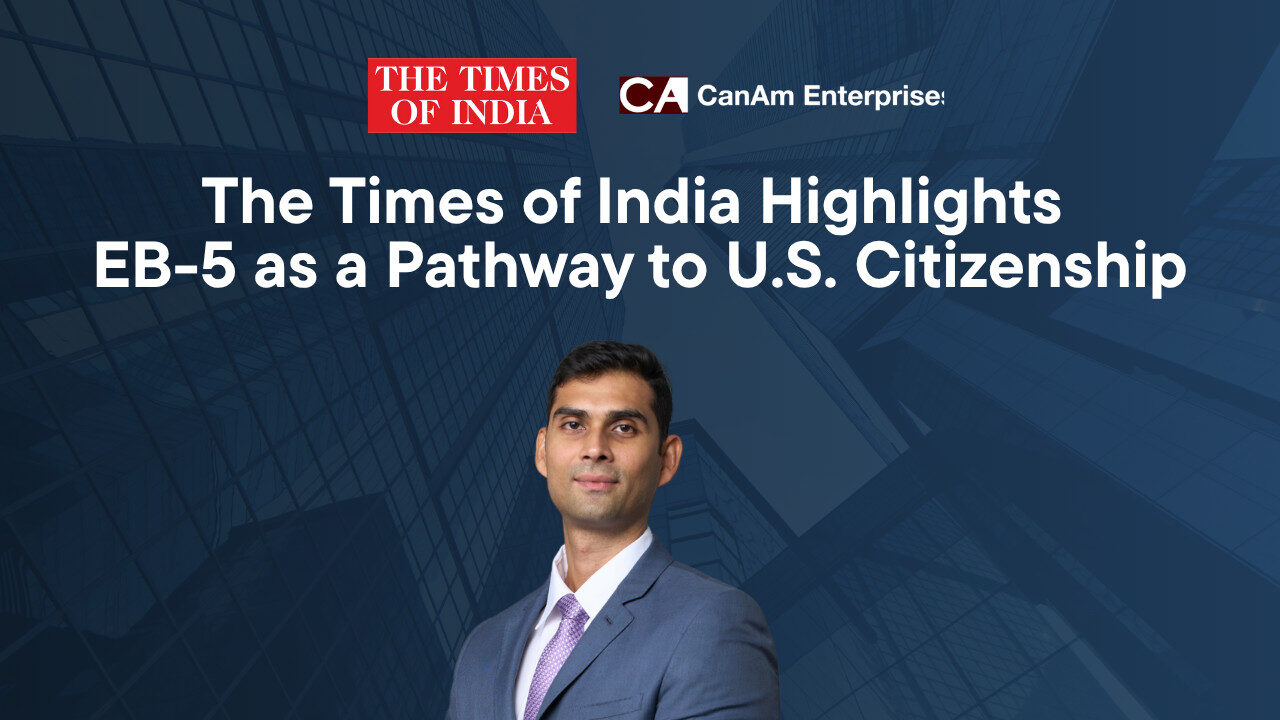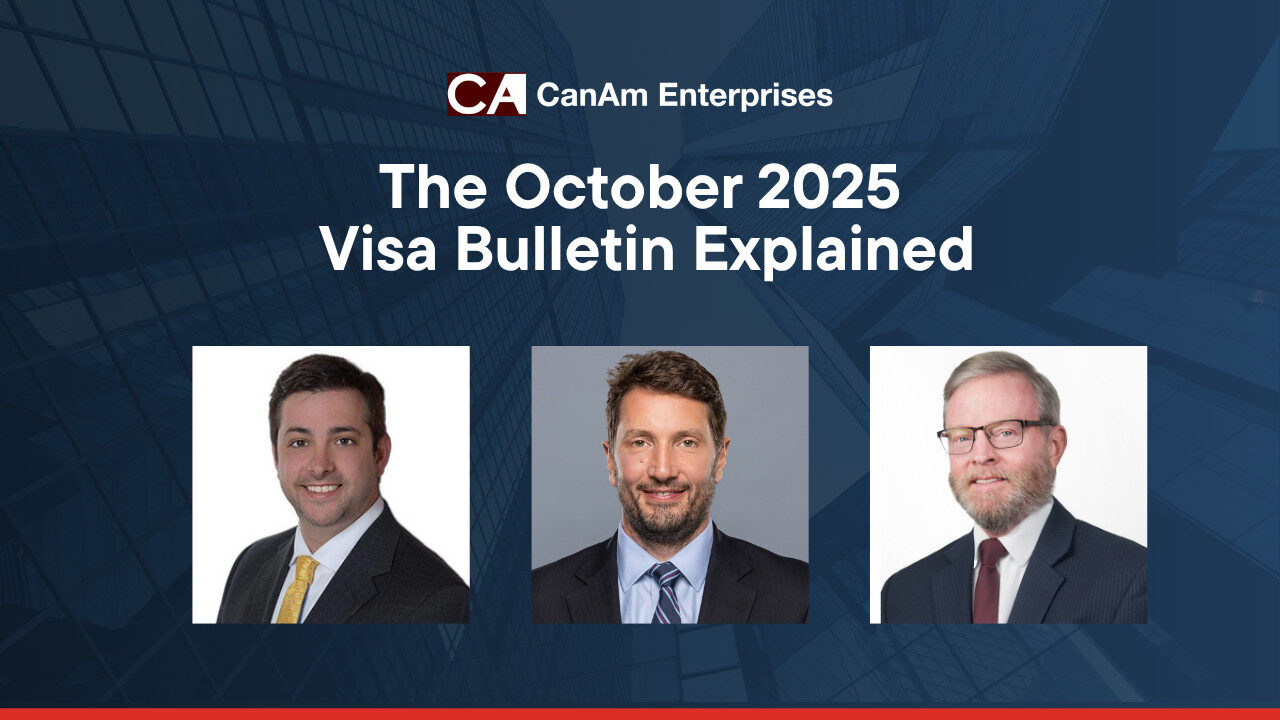When news broke about the administration’s proposed “Gold Card” immigration program—a new path for wealthy investors to live in the U.S.—many international families took notice. Could this new option compete with EB-5? Would it offer a faster or easier route to U.S. residency?
During CanAm’s recent EB-5 Advocacy Webinar, Tom Rosenfeld, Founder and CEO of CanAm Enterprises, joined immigration law leaders Ron Klasko, Ira Kurzban, and Enrique González to unpack the issue. Their consensus was clear: the Gold Card may make headlines, but EB-5 remains the more credible, sustainable, and proven investment-immigration program.
A “Buy-a-Visa” Idea Meets Political Reality
As Ron Klasko explained, the Gold Card originated from the administration’s failed attempt to include a $5 million “platinum visa” in budget legislation—a proposal that would have granted immigration benefits in exchange for a large payment to the government. When that effort faltered, the White House floated a scaled-down version: invest $1 million, receive no tax benefits, and gain conditional residency.
But critical details remain missing. “No one knows when the Gold Card is happening,” Klasko said. “There are no forms, no regulations, no adjudicators. We don’t even know which agency would run it. The chances of it all coming together soon are very small.” Worse yet, the program could face immediate legal challenges. “There’s a very good chance a federal court could rule it can’t be done by executive order,” he warned.
In contrast, EB-5 is codified by Congress, grounded in decades of policy, and consistently reauthorized on a bipartisan basis. As Klasko summed up, “EB-5 is a bird in the hand.”
EB-5: An Investment That Creates Jobs—Not Just Revenue
Enrique González offered another crucial distinction: EB-5 was created to stimulate economic development and job creation, not to monetize immigration. “The EB-5 program is about job creation through a wealth-attraction model,” he said. “The Gold Card is simply wealth attraction without job creation.”
That distinction matters to Congress and to communities that depend on EB-5 capital. Every qualified EB-5 investment generates at least 10 full-time U.S. jobs—something no “donation-based” visa can claim.
González added that while the Gold Card might appeal to ultra-high-net-worth individuals looking for U.S. access without the tax obligations of permanent residency, it fails the broader policy test: “If you want to arrive in the U.S. in the next few years, EB-5 is where you need to be. The Gold Card might attract interest, but EB-5 delivers certainty.”
Moral and Political Headwinds for “Buying In”
Ira Kurzban, one of the most respected voices in U.S. immigration law, pulled no punches. He called the Gold Card “a horrible idea,” directly contradicting decades of bipartisan values. “The notion that people can buy their way into America is exactly what Congress rejected in 1990 when it created EB-5,” he said.
Kurzban reminded the audience that the United States has long criticized other countries for “citizenship-by-investment” programs. “It’s contradictory to condemn those systems abroad while proposing one here,” he noted. Instead, he urged policymakers to learn from the Gold Card’s shortcomings—using it as a wake-up call to fix inefficiencies within EB-5 itself, particularly processing delays and the limited number of available visas.
Tom Rosenfeld: Why the Gold Card Helps EB-5
While others focused on the flaws, Tom Rosenfeld saw an unexpected upside: “From a business perspective, I think the Gold Card is an opportunity,” he said. “It raised public awareness and gave us a platform to show how EB-5 actually works—and works well.”
In Rosenfeld’s view, the Gold Card debate underscores EB-5’s credibility. “When you compare a buy-a-visa proposal with EB-5’s job-creation model, it enhances the program’s reputation,” he explained. “It gives us an opportunity to advocate, to show lawmakers that EB-5 is doing exactly what Congress intended—creating jobs without costing taxpayers a dime.”
Rosenfeld also pointed out that the timing could be advantageous. “There’s a shortage of capital in today’s markets, and legislators are looking for ways to spur development,” he said. “When we tell that story—that EB-5 brings private capital to projects that otherwise couldn’t get financed—it strengthens our case for extending and improving the program.”
The Big Picture: Advocacy Through Comparison
If the Gold Card ever materializes, it may inadvertently strengthen EB-5’s position. By contrasting a donation-based visa with a proven job-creation program, the EB-5 industry has a powerful story to tell—one rooted in accountability, transparency, and measurable public benefit.
As Rosenfeld concluded, “The Gold Card helps us tell the EB-5 story. It shows that the program works, that it’s bipartisan, and that it’s worth protecting.”
Key Takeaways for Investors
- EB-5 is law; the Gold Card is a proposal. EB-5 already provides a clear, regulated path to permanent residency.
- EB-5 capital creates U.S. jobs; the Gold Card does not. Congress continues to back EB-5 because it stimulates real economic growth.
- Timing matters. Investors who file EB-5 petitions before the September 30, 2026 grandfathering date secure protection even if legislative timelines shift.
- Advocacy opportunity. The Gold Card debate highlights EB-5’s strength as America’s only job-creating investment visa—and an essential tool for U.S. development.





